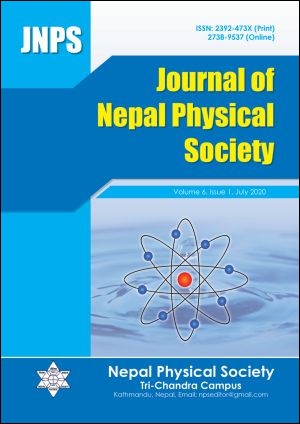Tuning Structural and Electronic Properties of Phosphorene with Vacancies
DOI:
https://doi.org/10.3126/jnphyssoc.v6i1.30428Keywords:
Band structure, Formation energy, Phosporene, VacanciesAbstract
Two dimensional materials show multiple applications including in semiconductor devices and gaseous storage. We have carried out First-Principles calculations to study the geometrical structures, stability and electronic/magnetic properties of pristine as well as double vacancy phospherene. Calculations are based on Density Functional Theory (DFT) taking an account of van der Waals (vdW) interaction in the DFT-D2 approach within Generalized Gradient Approximation (GGA). Modeling and simulation have been performed with Quantum ESPRESSO (QE) codes. The supercell of 4×4 structure, whose building block is an orthogonal unit cell with four phosphorous atoms, is used to model the samples. Based on the stability of defected single layer phosphorene, a couple of structures (DV(5|8|5)-1 and DV(5|8|5)-2) have been considered to calculate their formation energy, band structure and other properties. Formation energy values find the former structure (DV(5|8|5)-1) more favorable to create than the later one. A band gap of 0.86eV for pristine phospherene, an excellent agreement with the experiment, validates the results of present calculations. The phosphorene with double vacancy, however, shows significant changes in electronic bands with reference to the pristine one. The band gap for DV(5|8|5)-1 and DV(5|8|5)-2 systems are found to be 1.01eV and 0.1 eV respectively. No magnetic moment in both the pure and defected (double vacancy) phospherene monolayer approves that only the vacancies are not enough to induce magnetic properties in phosphorene.
Downloads
Downloads
Published
How to Cite
Issue
Section
License
All right reserved. No part of this Journal may be reproduced in any form or by any electronic or mechanical means, including information storage and retrieval system, without permission in writing from the publisher, except by a reviewer who may quote brief passage in a review. The views and interpretation in this journal are those of author(s) and they are not attributable to the NPS.




